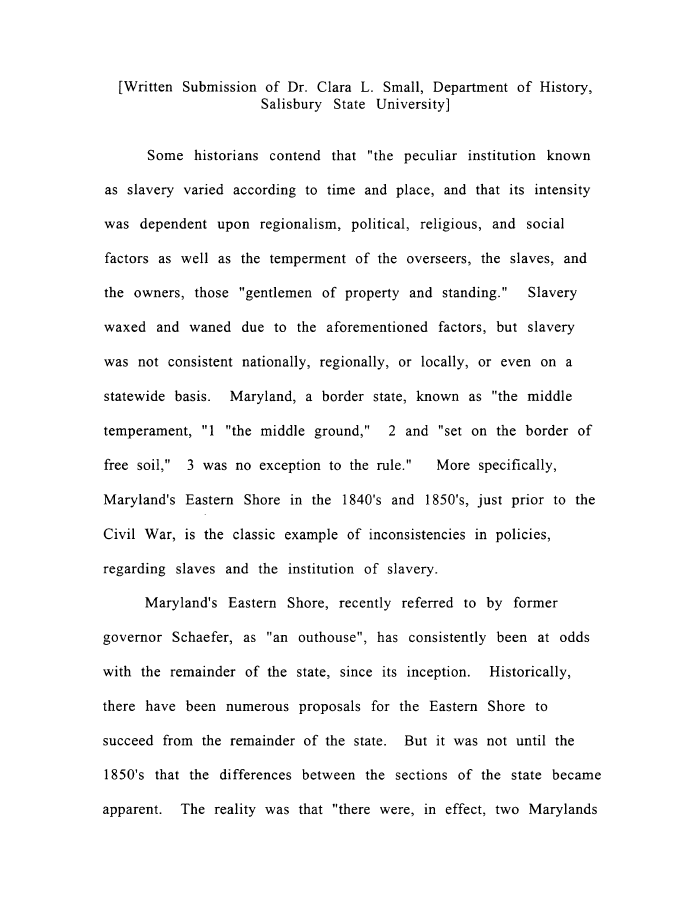 |
||||
|
TASK FORCE TO STUDY THE HISTORY AND LEGACY OF SLAVERY IN MARYLAND (Final Report) 1999/12/31 MdHR 991422 MdHR 991422, Image No: 314 Print image (42K) |
 |
||||
|
TASK FORCE TO STUDY THE HISTORY AND LEGACY OF SLAVERY IN MARYLAND (Final Report) 1999/12/31 MdHR 991422 MdHR 991422, Image No: 314 Print image (42K) |
| [Written Submission of Dr. Clara L. Small, Department of History, Salisbury State University] Some historians contend that "the peculiar institution known as slavery varied according to time and place, and that its intensity was dependent upon regionalism, political, religious, and social factors as well as the temperment of the overseers, the slaves, and the owners, those "gentlemen of property and standing." Slavery waxed and waned due to the aforementioned factors, but slavery was not consistent nationally, regionally, or locally, or even on a statewide basis. Maryland, a border state, known as "the middle temperament, "1 "the middle ground," 2 and "set on the border of free soil," 3 was no exception to the rule." More specifically, Maryland's Eastern Shore in the 1840's and 1850fs, just prior to the Civil War, is the classic example of inconsistencies in policies, regarding slaves and the institution of slavery. Maryland's Eastern Shore, recently referred to by former governor Schaefer, as "an outhouse", has consistently been at odds with the remainder of the state, since its inception. Historically, there have been numerous proposals for the Eastern Shore to succeed from the remainder of the state. But it was not until the 1850's that the differences between the sections of the state became apparent. The reality was that "there were, in effect, two Marylands |